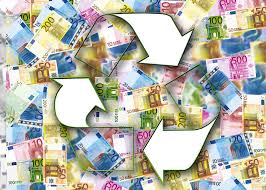Please see part 4 here: http://www.kataneh.com/index.php/2018/04/25/basics-of-macroeconomics-4/
These series of articles are for those intelligent group of people whose expertise are not economics or finance, but are still interested to understand the impact of macroeconomic monetary and fiscal policies such as interest rates, taxes or spending on the overall course of economy, their businesses, their employers, investments and of course their daily life.Therefore, in these articles, I have knowingly avoided using economic and finance terms and jargon, as much as possible.
The impact of different macroeconomics monetary and fiscal policies on each other, economy and growth are complicated and may cause vicious, benign or virtuous cycles. It is like a polynomial equation with many different interactive factors and coefficients. Changing the value of each factor and each coefficient will not only generate a different result, but may even change the value of some other factors in that same equation! And of course, changing one factor may generate multiple or totally different results for different values of another factor.
Knowing all those facts, in this article, discussion is kept very simple and to the point. At any time, we focus on one causal impact of one factor only if ALL other factors are assumed to remain constant.
Part 5- Unemployment, Wage Growth, Inflation, Interest Rates
a- Imagine that you have a pastry restaurant and your business depends on a skillful pastry chef, a barrista, and a couple of waiters and waitresses. Your main ingredients are coffee, sugar, milk and vanilla. You could easily find the chef and the barrista when unemployment rate was high, and economy was not at its best shape. But as economy expands, more jobs are created, and unemployment rate drops. All of a sudden, your chef decides to leave. As you try to find her a replacement, you realize that your choices are limited, and the most skillful people are already hired. So, your best choice would be offering higher wage to your chef.
Also, because of economic expansion, and due to lower unemployment rate and higher wages, prices have grown too, so, you pay higher for sugar and vanilla. Also, a couple of months earlier, a tariff was imposed on cocoa beans which made their prices even higher. Now, you need to pay extra for material, and for labor. You will have to increase your prices on the menu to remain profitable.
So, as unemployment rate declines, cost of labor and material grows, so, businesses need to ask for higher prices for their products and services to remain profitable.
b- As unemployment declines, and prices inflate, interest rates should go up to 1) keep prices from overheating, 2) match return on people’s savings in the banks with the inflated prices.
So, imagine that you had borrowed $50,000 at 5% to start your business. Now rates are higher at 7%. So, initially you paid $2500 of interest, but now you need to pay $3,500 of interest. Again, you should either increase your prices, or, your profits will decline. The same is happening to your customers. If they have $5,000 of debt on their credit, now they should pay $350 of interest instead of $250. At the same time, your prices have gone higher! This means that fewer people will be able to afford dining out, so, your sale declines, and your labor and material expenses are higher already!
Your pastry shop’s sales and profits will start to decline, which means that you should either make your business smaller, fire one of the waiters, or cut your own salary and the salary of your staff to make sure you business will keep on running.
This is how growth leads to low unemployment, higher wages, price inflation and higher interest rates, which in turn limits the growth, leads to lower wages and higher unemployment rate, hence lower interest rates, and higher growth….and the cycle goes on and on and on and on.


One Reply to “Basics of Macroeconomics – 5”
Comments are closed.